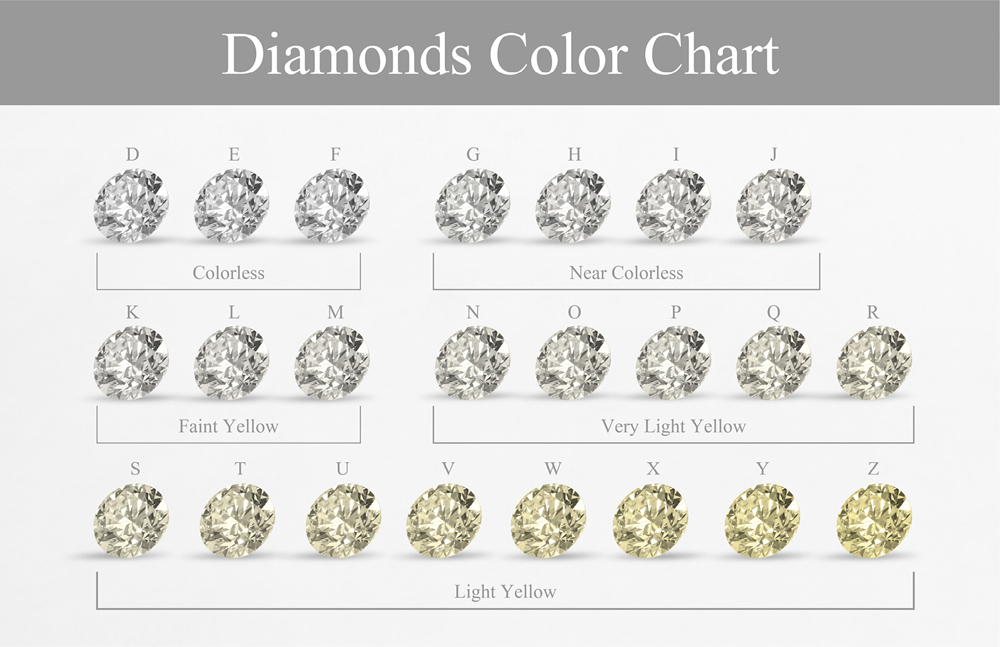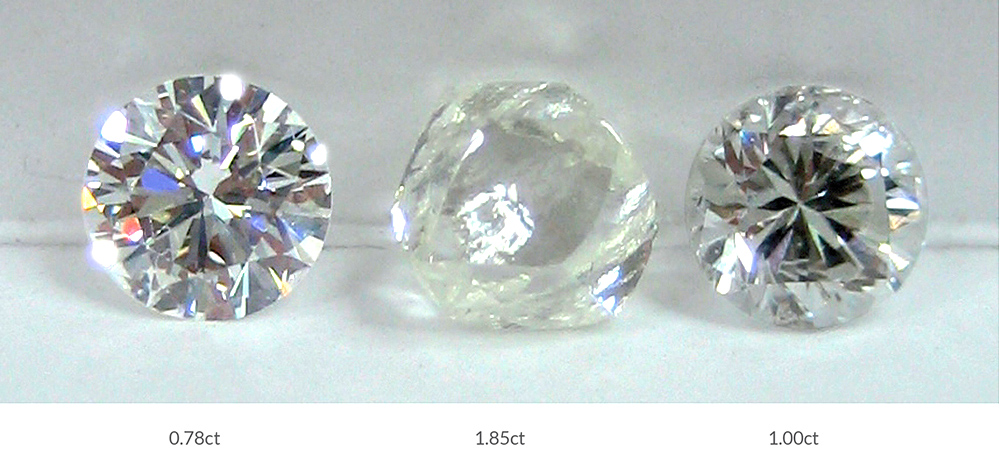Caring for your Jewellery while abroad
Heading to the Mediterranean this season? While you soak up the sun, make sure your diamonds are just as radiant when...
In exploring the world of colourless natural diamonds, buyers are often puzzled by the price differences of two diamonds of identical carat sizes. Sometimes even the diamond’s colour and clarity are the same. There are many factors that you need to know to understand often substantial price differences.
To begin, a crucial clarification – it’s not “carat size,” but rather the “carat weight“. People think they are the same, but they are not! “1.00 ct diamond” means that it weighs 0.2g – it doesn’t say anything about its measurements or dimensions. This means that a well-cut 1 ct diamond engagement ring can look more impressive than a poorly cut 1.5 carat diamond engagement ring.
Consider two 1-carat diamonds where one appears notably larger. This disparity in visual perception can be significant and confuses buyers. It goes even further – 0.90ct diamond can look bigger than 1.05ct diamond, but the price of diamonds over 1ct is much higher than the price of diamonds under 1ct. If you buy purely for carat size or weight, you can end up paying much more for a stone that looks smaller. And probably looks dull too.
Moving beyond the weight, a few critical factors influence the price of a diamond, referred to as the “4 C’s”: Carat, Colour, Clarity and Cut.
The Colour, or lack of it, is pivotal – diamonds with a whiter hue typically command higher prices. In reality, unless you are a trained diamond grader, it is not easy to distinguish between the top colour D down to G (on a scale that goes to Z). The cost difference, though, between D and G can be huge!

Clarity has a big impact on price. While flawless diamonds are esteemed for their purity, the trade-off against cost versus size can be questionable. Your naked eye can’t discern these minute inclusions until you fall below VS or Very slight inclusions. Choosing a slightly included diamond may yield considerable cost savings and side by side with a flawless diamond there is often no visual or brilliance difference.
The Cut, the most critical aspect, profoundly influences a diamond’s appearance. A poorly cut diamond lacks the desired sparkle, and looks like glass rather than the anticipated radiant gem. Sadly, most diamonds are cut to retain as much carat weight at the expense of the look and sparkle.
Fluorescent diamonds, often associated with reduced prices, can surprise buyers. In truth, if devoid of haziness, these diamonds can exhibit a whiter appearance compared to non-fluorescent counterparts of the same colour specification.
Then we have the world of Certifications. While a Gemmological Institute of America (GIA) certificate serves as a comprehensive guide, confirming a diamond’s natural origin, weight, and gradings for colour and clarity, it gives three quarters of diamonds its top cut quality grade. The labelled “GIA triple excellent” or XXX doesn’t guarantee an exceptional sparkle. The diamond can be GIA XXX but hazy and dull.
Understanding diamond pricing remains a complex maze, compounded by the limited knowledge regarding the profound effects of cut, fluorescence, and haziness on a diamond’s brilliance. These subtle intricacies can drastically shift a diamond from a captivating display of light to a dull, lacklustre stone. Spending more may not always result in a better rock.
In summary, the significant price variance between two seemingly identical diamonds of the same carat weight stems from a complex interplay of factors encompassing colour, clarity and often overlooked elements like fluorescence and cut precision. We hope this article introduces you to the need to learn more to unveil the intricate dance between pricing and a diamond’s visual allure.

Diamond cutters make more money cutting this rough diamond into a dull drab 1.00 carat stone. It could be polished into a sparkly 78-pointer that looks bigger and costs you less.
FAQs (Frequently Asked Questions)
Q: Why can a diamond of the same carat size cost more? A: Factors like fluorescence and cut precision can significantly impact the price of a diamond due to their effects on the diamond’s visual appearance and perceived value. Fluorescence, for example, can either enhance or detract from the diamond’s whiteness, influencing its desirability and therefore its price. Similarly, the precision of the cut determines how effectively light is reflected and dispersed within the diamond, directly affecting its sparkle and brilliance. Despite their importance, these factors are often overlooked in discussions about diamond pricing, leading to misunderstandings among buyers regarding the true value of a diamond.
Q: Can you provide examples demonstrating how different combinations of the 4Cs affect diamond prices? A: Examples and case studies can vividly demonstrate how different combinations of the 4Cs affect the price of diamonds. For instance, comparing two diamonds of the same carat weight but differing significantly in colour and clarity grades can highlight the substantial price variations that result from these differences. Additionally, showcasing diamonds with varying cut qualities and degrees of fluorescence can illustrate their impact on the diamond’s visual appeal and corresponding price points.
Q: Are there additional factors beyond the 4Cs that influence diamond pricing? A: While the 4Cs (Carat, Colour, Clarity, and Cut) serve as standard metrics for evaluating diamond quality, there are additional factors that contribute to a diamond’s visual allure and pricing in the market. These factors may include aspects like symmetry, polish, and the presence of any optical phenomena such as light performance and fire. Diamonds that exhibit exceptional symmetry and polish, along with superior light performance and fire, often command higher prices due to their heightened visual appeal. However, these factors are not always standardized or widely recognized, making it essential for buyers to educate themselves thoroughly to understand their impact on diamond pricing and quality.
Heading to the Mediterranean this season? While you soak up the sun, make sure your diamonds are just as radiant when...
When it comes to purchasing an engagement ring, the diamond isn’t the only star of the show. The setting style can...
Investing in gold jewellery is a time-honoured tradition that continues to shine in 2025. Gold has been a reliable...